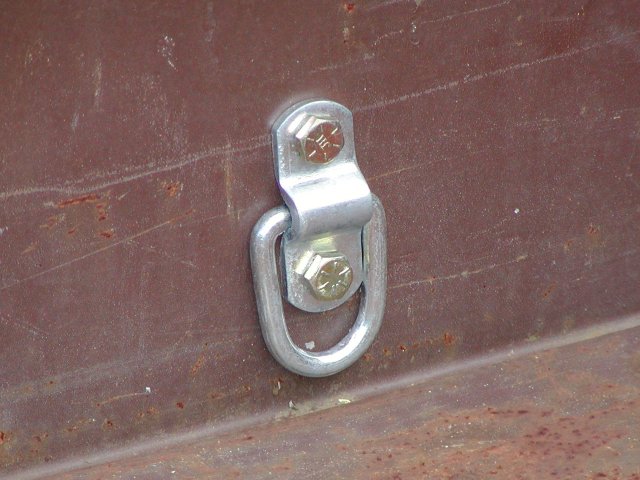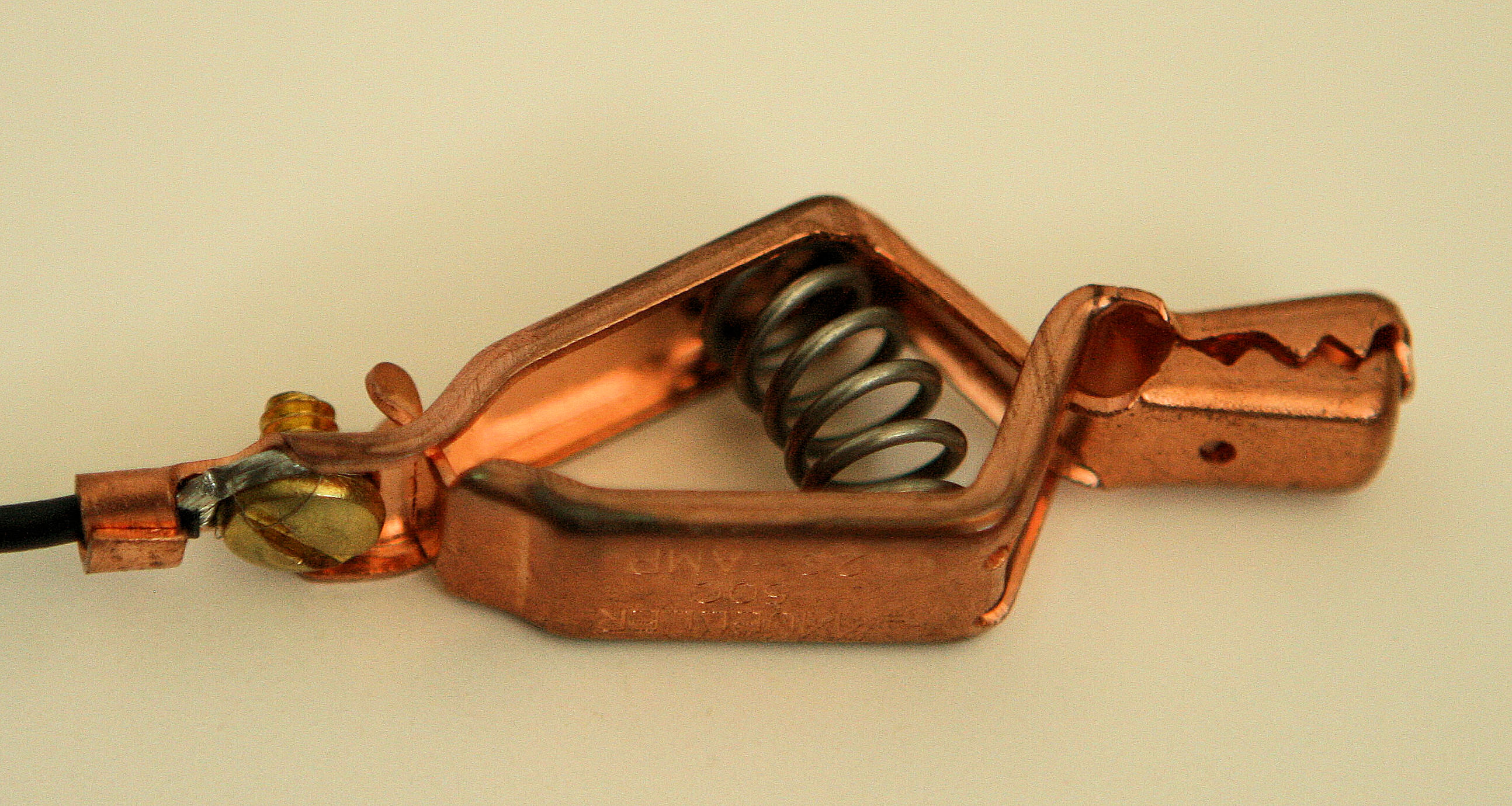|
Body Cord
In fencing, a body cord serves as the connection between a fencer and a reel of wire that is part of a system for electrically detecting that the weapon has touched the opponent. There are two types: one for epee, and one for foil and sabre. Description Épée body cords consist of two sets of three prongs each connected by a wire. One set plugs into the fencer's weapon, with the other connecting to the reel. Foil and saber body cords have only two irregularly sized prongs (or a twist-lock bayonet connector) on the weapon side, with the third wire connecting instead to the fencer's lamé. The need in foil and saber to distinguish between on and off-target touches requires a wired connection to the valid target area. How it works The three wires of the body cord are known as the A, B, and C lines. At the reel connector (and both connectors for Épée cords) The B pin is in the middle, the A pin is 1.5 cm to one side of B, and the C pin is 2 cm to the other side of B.Ja ... [...More Info...] [...Related Items...] OR: [Wikipedia] [Google] [Baidu] |
Fencing
Fencing is a group of three related combat sports. The three disciplines in modern fencing are the foil, the épée, and the sabre (also ''saber''); winning points are made through the weapon's contact with an opponent. A fourth discipline, singlestick, appeared in the 1904 Olympics but was dropped after that and is not a part of modern fencing. Fencing was one of the first sports to be played in the Olympics. Based on the traditional skills of swordsmanship, the modern sport arose at the end of the 19th century, with the Italian school having modified the historical European martial art of classical fencing, and the French school later refining the Italian system. There are three forms of modern fencing, each of which uses a different kind of weapon and has different rules; thus the sport itself is divided into three competitive scenes: foil, épée, and sabre. Most competitive fencers choose to specialize in one weapon only. Competitive fencing is one of the five activitie ... [...More Info...] [...Related Items...] OR: [Wikipedia] [Google] [Baidu] |
Foil (fencing)
A foil is one of the three weapons used in the sport of fencing, all of which are metal. It is flexible, rectangular in cross section, and weighs under a pound. As with the épée, points are only scored by contact with the tip, which, in electrically scored tournaments, is capped with a spring-loaded button to signal a touch. A foil fencer's uniform features the lamé (a vest, electrically wired to record valid hits). The foil is the most commonly used weapon in competition.https://idrottonline.se/LjungbyFK-Faktning/globalassets/ljungby-fk---faktning/dokument/a-parents-guide-to-fencing.pdf Non-electric and electric foils Background There are two types of foils that are used in modern fencing. Both types are made with the same basic parts: the pommel, grip, guard, and blade. The difference between them is one is electric, and the other is known as "steam" or "dry". The blades of both varieties are capped with a plastic or rubber piece, with a button at the tip in electric b ... [...More Info...] [...Related Items...] OR: [Wikipedia] [Google] [Baidu] |
Sabre (fencing)
The sabre (US English: ''saber'', both pronounced ) is one of the three disciplines of modern fencing. The sabre weapon is for thrusting and cutting with both the cutting edge and the back of the blade (unlike other modern fencing weapons, the épée and foil, where the methods of making a hit are scored using only the point of the blade). The informal term ''sabreur'' refers to a male fencer who follows the discipline; ''sabreuse'' is the female equivalent. The sabre weapon "The blade, which must be of steel, is approximately rectangular in section. The maximum length of the blade is 88 cm. The minimum width of the blade, which must be at the button, is 4 mm; its thickness, also immediately below the button, must be at least 1.2 mm." The cross-sectional profile of the sabre blade is commonly a V-shaped base which transitions to a flat rectangular shaped end with most blade variants, but this is dependent on how it is manufactured. This allows the blade to be flexible towards ... [...More Info...] [...Related Items...] OR: [Wikipedia] [Google] [Baidu] |
Lamé (fencing)
In fencing, a lamé is an electrically conductive jacket worn by foil and sabre fencers in order to define the scoring area (which is different for each weapon). Foil lamés, although traditionally a metallic grey, are becoming more and more popular in an array of colors. In foil, the lamé extends on the torso from the shoulders to the groin area, including the back. In sabre, the lamé covers both arms, the torso from the shoulders to the waist, and the back. Lamés used in higher-level competitions usually have the last name and country of their owner printed in blue across the back. In addition, sabre fencers wear masks that allow them to register head touches, and ''manchettes'', which are conductive glove covers, on their weapon hand. Lamés are wired by use of a body cord to a scoring machine, which allows the other person's weapon to register touches when their tips (or blades, in sabre A sabre ( French: �sabʁ or saber in American English) is a type of backs ... [...More Info...] [...Related Items...] OR: [Wikipedia] [Google] [Baidu] |
Body Cord French Fencing Championship 2013 N03
Body may refer to: In science * Physical body, an object in physics that represents a large amount, has mass or takes up space * Body (biology), the physical material of an organism * Body plan, the physical features shared by a group of animals * Human body, the entire structure of a human organism ** Dead body, cadaver, or corpse, a dead human body * (living) matter, see: Mind–body problem, the relationship between mind and matter in philosophy * Aggregates within living matter, such as inclusion bodies In arts and entertainment In film and television * ''Body'' (2015 Polish film), a 2015 Polish film * ''Body'' (2015 American film), a 2015 American film * "Body" (''Wonder Showzen'' episode), a 2006 episode of American sketch comedy television series ''Wonder Showzen'' * "Body", an episode of the Adult Swim television series, ''Off the Air'' In literature and publishing * body text, the text forming the main content of any printed matter * body (typography), the size o ... [...More Info...] [...Related Items...] OR: [Wikipedia] [Google] [Baidu] |
Glove
A glove is a garment covering the hand. Gloves usually have separate sheaths or openings for each finger and the thumb. If there is an opening but no (or a short) covering sheath for each finger they are called fingerless gloves. Fingerless gloves having one small opening rather than individual openings for each finger are sometimes called gauntlets, though gauntlets are not necessarily fingerless. Gloves which cover the entire hand or fist but do not have separate finger openings or sheaths are called mittens. Mittens are warmer than other styles of gloves made of the same material because fingers maintain their warmth better when they are in contact with each other; reduced surface area reduces heat loss. A hybrid of glove and mitten contains open-ended sheaths for the four fingers (as in a fingerless glove, but not the thumb) and an additional compartment encapsulating the four fingers. This compartment can be lifted off the fingers and folded back to allow the individual fi ... [...More Info...] [...Related Items...] OR: [Wikipedia] [Google] [Baidu] |
D-ring
A D-ring is a D-shaped metal ring used primarily as a lashing point in a tie-down system. Depending on their function D-rings may vary in composition, geometry, weight, finish, and load capacity. They may be screwed or welded in place, or attached to the end of a cord or a strap. In permanent applications recessed tie-down rings minimize obstruction when the ring is not in use. A D-ring may be also used as a permanent lifting point, or as a part of a tether. The most basic carabiner A carabiner or karabiner () is a specialized type of shackle, a metal loop with a spring-loaded gate used to quickly and reversibly connect components, most notably in safety-critical systems. The word is a shortened form of ''Karabinerhaken' ... is a D-ring with a pivoting gate. References {{DEFAULTSORT:D-Ring Hardware (mechanical) ... [...More Info...] [...Related Items...] OR: [Wikipedia] [Google] [Baidu] |
Alligator Clip
Alligator clip A crocodile clip or alligator clip is a plier-like spring-tensioned metal clip with elongated, serrated jaws that is used for creating a temporary electrical connection. This simple mechanical device gets its name from the resemblance of its serrated jaws to the toothed jaws of a crocodile or alligator. It is used to clamp and grab onto a bare electrical cable to an lead on a battery or some other electrical component. Functioning much like a spring-loaded clothespin, the clip's tapered, serrated jaws are forced together by a spring to grip an object. When manufactured for electronics testing and evaluation, one jaw of the clip is typically permanently crimped or soldered to a wire, or is bent to form the inner tubular contact of a ~ female banana jack, enabling quick non-permanent connection between a circuit under test and laboratory equipment or to another electrical circuit. The clip is typically covered by a plastic shroud or "boot" to prevent accidental sho ... [...More Info...] [...Related Items...] OR: [Wikipedia] [Google] [Baidu] |
Piste
A ''piste'' () is a marked ski run or path down a mountain for snow skiing, snowboarding, or other mountain sports. This European term is FrenchEnglish language ''Fédération Internationale de Ski'' (FIS) website ("trail", "track") and synonymous with 'trail', 'slope', or 'run' in North America. The word is pronounced using a long "e" sound so that it rhymes with "beast". North Americans employ its common European antonym, 'off piste', to describe , especially when referring to skiing outside officially approved areas of a |
Penalty Card
Penalty cards are used in many sports as a means of warning, reprimanding or penalising a player, coach or team official. Penalty cards are most commonly used by referees or umpires to indicate that a player has committed an offence. The official will hold the card above their head while looking or pointing towards the player that has committed the offence. This action makes the decision clear to all players, as well as spectators and other officials in a manner that is language-neutral. The colour or shape of the card used by the official indicates the type or seriousness of the offence and the level of punishment that is to be applied. Yellow and red cards are the most common, typically indicating, respectively, cautions and dismissals. History and origin The idea of using language-neutral coloured cards to communicate a referee's intentions originated in association football, with English referee Ken Aston. Aston had been appointed to the FIFA Referees' Committee and was resp ... [...More Info...] [...Related Items...] OR: [Wikipedia] [Google] [Baidu] |





.jpg)


